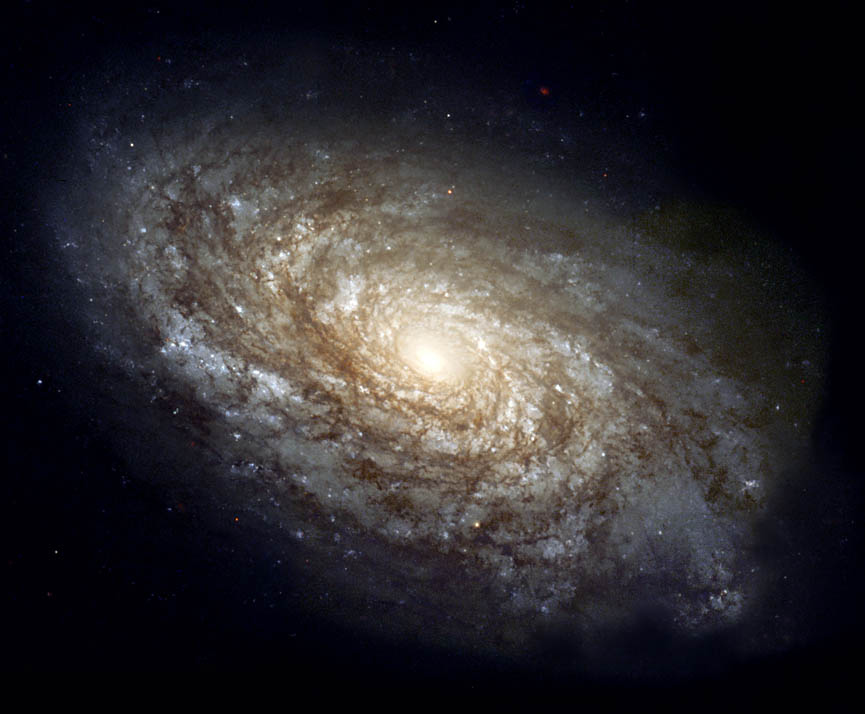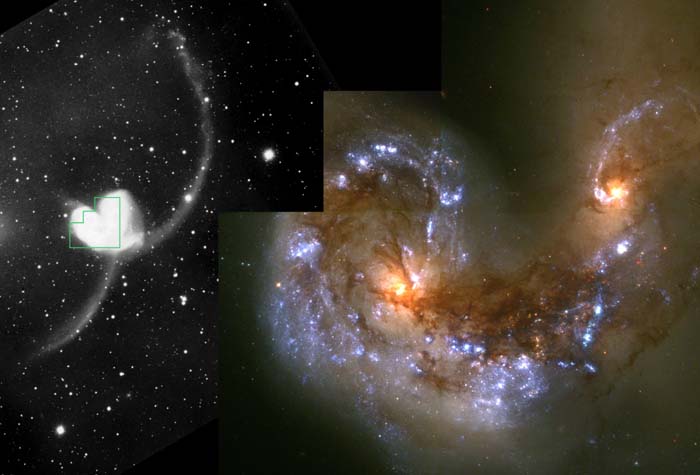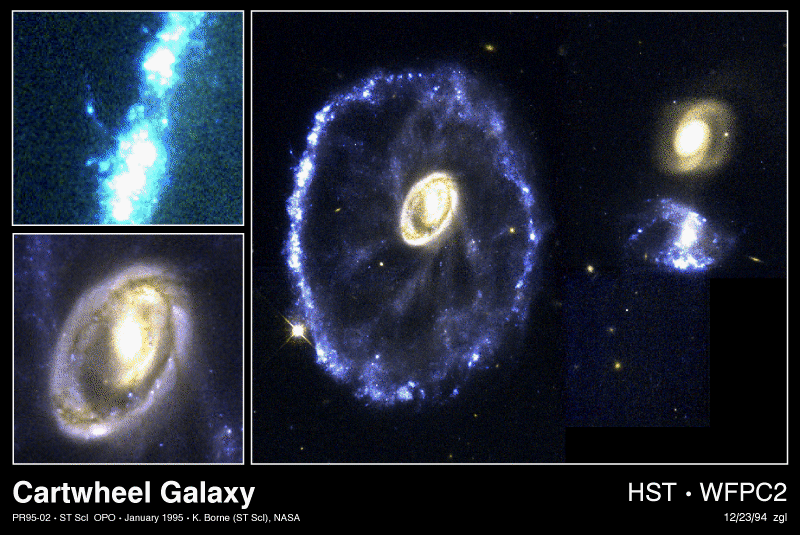
Images of Various Galaxies

Probably my favorite galaxy picture, the large swirling whirlpool of galaxy NGC4414. The NASA press release follows below.
In 1995, the majestic spiral galaxy NGC 4414 was imaged by the Hubble Space Telescope
as part of the HST Key Project on the Extragalactic Distance Scale. An international team
of astronomers, led by Dr. Wendy Freedman of the Observatories of the Carnegie Institution
of Washington, observed this galaxy on 13 different occasions over the course of two
months.
Images were obtained with Hubble's Wide Field Planetary Camera 2 (WFPC2) through three
different color filters. Based on their discovery and
careful brightness measurements of variable stars in NGC 4414, the Key Project astronomers
were able to make an accurate determination of the
distance to the galaxy.
The resulting distance to NGC 4414, 19.1 megaparsecs or about 60 million light-years,
along with similarly determined distances to other nearby galaxies, contributes to
astronomers' overall knowledge of the rate of expansion of the universe. The Hubble
constant (H0) is the ratio of how fast galaxies are moving away from us to their distance
from us. This astronomical value is used to determine distances, sizes, and the intrinsic
luminosities for many objects in our universe, and the age of the universe itself.
Due to the large size of the galaxy compared to the WFPC2 detectors, only half of the
galaxy observed was visible in the datasets collected by the Key Project astronomers in
1995. In 1999, the Hubble Heritage Team revisited NGC 4414 and completed its portrait by
observing the other half with the same filters as were used in 1995. The end result is a
stunning full-color look at the entire dusty spiral galaxy. The new Hubble picture shows
that the central regions of this galaxy, as
is typical of most spirals, contain primarily older, yellow and red stars. The outer
spiral arms are considerably bluer due to ongoing formation of young, blue stars, the
brightest of which can be seen individually at the high resolution provided by the Hubble
camera. The arms are also very rich in clouds of interstellar dust, seen as
dark patches and streaks silhouetted against the starlight.

HUBBLE REVEALS STELLAR FIREWORKS ACCOMPANYING GALAXY COLLISION
This Hubble Space Telescope image provides a detailed look at a brilliant
"fireworks show" at the center of a collision between two galaxies. Hubble
has uncovered over 1,000 bright, young star clusters bursting to life as a result of
the head-on wreck.
[Left] A ground-based telescopic view of the Antennae galaxies (known formally
as NGC 4038/4039) - so named because a pair of long tails of luminous matter, formed
by the gravitational tidal forces of their encounter, resembles an insect's antennae. The
galaxies are located 63 million light-years away in the southern constellation
Corvus.
[Right] The respective cores of the twin galaxies are the orange blobs, left and right of
image center, crisscrossed by filaments of dark dust. A wide band of chaotic dust, called
the overlap region, stretches between the cores of the two galaxies. The sweeping
spiral-like patterns, traced by bright blue star clusters, shows the result of a firestorm
of star birth activity which was triggered by the collision.

The Cartwheel Galaxy --" Another Galactic Collision"
This image shows a peculiar galaxy that looks like a cart, or wagon, wheel. It is the result of a rare and spectacular head on collision between this galaxy and possible one of the other two that you see at the right. The Cartwheel galaxy was probably shaped like a spiral (like our own Milky Way) before the collision but, like a stone tossed into a pond, the collision sent out a ripple of energy that compressed the galaxy's gas in its wake and distorted its shape. This circular ripple of compressed gas is currently at the position of the Cratwheel's "rim" and has resulted in a burst of star formation that causes the rim to shine brightly.